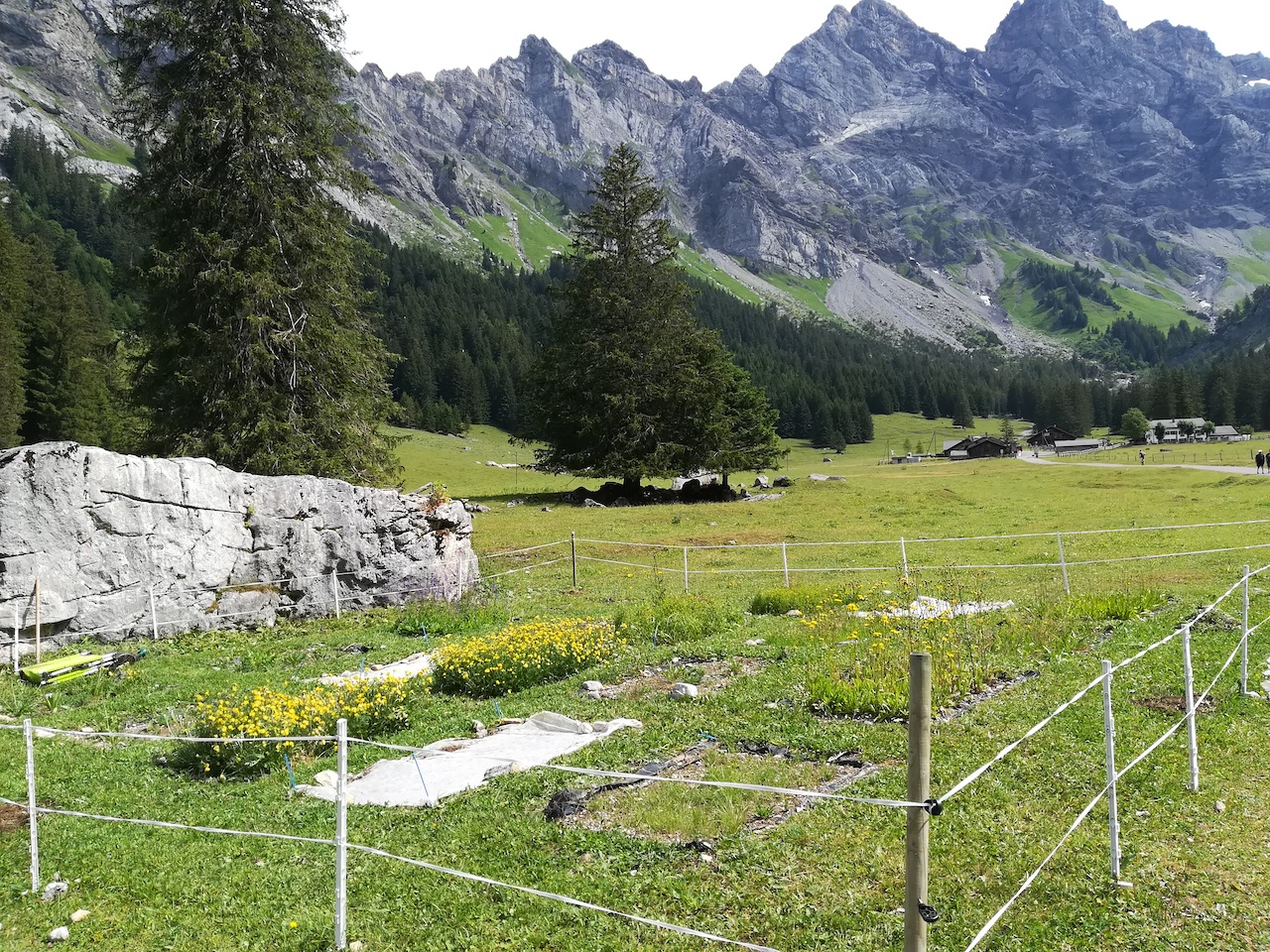Novel interactions and species' responses to climate change (NICH)

This project is now finished and was funded by the European Research Council.

Project description
A crucial challenge facing ecologists is predicting the responses of species, communities and ecosystems to global climate change. Progress will hinge on our ability to predict how responses are shaped by evolution and species interactions, and especially by entirely novel interactions among species whose ranges don't yet overlap. To tackle this goal, in an ERC project we combined large-scale field experiments, molecular analyses and species distribution modeling to address three questions about the impact of novel competitors on responses to climate change in alpine plant communities:
How will novel interactions impact species responses to climate change?
We tested the ecological consequences of novel competitors for population persistence, and the potential for longer-term evolutionary responses, using a whole community transplant experiment that simulates future competitive scenarios faced by focal alpine plants at field sites in the western Swiss Alps. external page We found that novel competitors accelerate local extinction risk for some alpine plants, and can be decisive for predictions of population persistence at low levels of warming. This may help explain why we see "extinction debt" on mountain summits until now. We also found that climate warming imposes novel selection regimes on our focal alpine plants, mainly on leaf morphology. However, competitors often reduced the intensity of selection imposed by climate warming, partly by suppressing seed production, constraining the potential for our focal species to adapt to climate warming in the longer term. This work highlights the importance of community context for evolutionary potential (see also external page Alexander et al. 2022).
Do species traits predict the outcome of novel interactions?
A mechanistic understanding of competitive effects is essential to predict impacts of novel interactions. We are testing how climate affects the outcome of competition among pairs of species planted along an elevation climate gradient, and whether these effects can be predicted using species’ functional traits. So far, traits have not emerged as strong predictors of competitive outcomes. However, by estimating population growth rates of species with and without competition, external page we show that competition not only shapes the lower elevation limits of alpine species, as commonly expected, but also the upper elevation limits of lowland species. The reduced ability of species to coexist beyond their range edge was driven by increasing niche differences between species, as well as greater competitive dominance of lowland species at low elevation.
What are the implications of novel competitive interactions for species’ ranges dynamics under climate change?
We are developing process-based species distribution models, partially parameterized with experimental demographic data, to explore the consequences of changing competitive interactions for range dynamics under climate change.
Main collaborators
chevron_right Simone FiorSelected Publications
Lyu, S. and J.M. Alexander. 2022.
Competition contributes to both warm and cool range edges.
Nature Communications 13:2502-2509.
Nomoto, H.A. and J.M. Alexander. 2021.
Drivers of local extinction risk in alpine plants under warming climate.
Ecology Letters 24:1157-1166.
Stephan, P., B. Bramon Mora, and J.M. Alexander. 2021.
Positive species interactions shape species' range limits.
Oikos 130:1611-1624.
Alexander, J.M., L. Chalmandrier, J. Lenoir, T.I. Burgess, F. Essl, S. Haider, C. Kueffer, K. McDougall, A. Milbau, M.A. Nuñez, A. Pauchard, W. Rabitsch, L.J. Rew, N. Sanders, and L. Pellissier. 2018.
Lags in the response of mountain plant communities to climate change.
Global Change Biology 24:563-579.
Alexander, J.M., J.M. Diez, S. Hart, and J.M. Levine. 2016.
When climate reshuffles competitors: a call for experimental macroecology.
Trends in Ecology and Evolution 31:831-841.